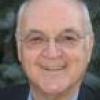In mid-August a group of young theologians, all under the age of 40, teaching at Catholic colleges, universities, and seminaries met at Fordham University in New York City to discover ways to overcome the polarization they find in today’s Catholic Church.
Although the group did not draft a mission statement as such, it formulated a paragraph as a kind of self-description of their work on behalf of the Church:
What does the Fordham group mean by the “ideological” character of the debates at Vatican II? Did those debates represent differences in theological and pastoral emphases, or were they reflective of radically different understandings of the nature, mission, and structural operations of the Church?
Were the debates, however characterized, carried on by two more or less evenly divided groups, or were we dealing instead with an overwhelming majority of bishops and theologians on the one hand and a relatively tiny minority of bishops and their theological allies on the other?
One of the organizers of the Fordham group is a former student of mine at the University of Notre Dame, Charles Camosy. He is now an assistant professor of moral theology at Fordham. Camosy wrote that the controversy at last year’s graduation ceremony at Notre Dame “helped spur the group’s commitment to moving past the polarization that often afflicts internal Catholic discussions.”
But how exactly were the disagreements about President Obama’s invitation to address the graduates of Notre Dame examples of polarization in the Church? And how did these disagree-ments “spur the [Fordham] group’s commitment to [move] past the polarization?” Camosy doesn’t say.
Camosy did suggest, however, that the divisions within the Church were “widened and deep-ened” as a result of the controversy. Again, he doesn’t say how.
He expressed admiration for graduating seniors who cheered President Obama, as well as for those who staged a separate ceremony in protest.
The impression may have been left, however, that both sides were about equal in size. Such was not the case.
The overwhelming majority of graduates were in the Joyce Athletic and Convocation Center. As soon as a few adults who had received entry tickets from anti-Obama students began to shout epithets at the President, the assembled student body -- spontaneously and without any prompt-ing -- began chanting “We are ND!” and continued doing so until the disrupters were removed from the building.
To be sure, the alternative ceremony held elsewhere on campus was conducted peacefully and with dignity, but it never consisted of more than a tiny minority of graduates and their supporters from outside the university.
If the Fordham group of young Catholic theologians were guilty of anything -- beyond their evident good will -- it may have been naivete.
They implied that an older generation of Catholic theologians may have been somehow responsible for the polarization in the Catholic Church by fomenting the so-called culture wars of the 1960s and 1970s “through which much of the council and its aftermath were read.”
But the Fordham group’s sense of history seems truncated. Have they forgotten that after Pope Paul VI, the man elected to the papacy was John Paul I -- the Patriarch of Venice -- and that he died after only 33 days in office?
Had John Paul I not died prematurely, we would never have had John Paul II, who came into office with a clearly conceived plan to re-make the face of the hierarchy -- a plan that involved the dismantling of much of what Paul VI tried to create, particularly a cadre of pastoral bishops committed to carrying out the reforms and renewal launched, under Paul VI’s direction, by Vatican II.
Thus, if there is any single reason why polarization exists in the Catholic Church today it is because of the type of bishops whom John Paul II appointed and promoted within the hierarchy over the course of his 26 and a half years in office.
Any other explanation of the polarization that now afflicts the Church is simply naive.
[Fr. Richard McBrien is the Crowley-O’Brien professor of theology at the University of Notre Dame, Ind.]
© 2010 Richard P. McBrien. All rights reserved.
Editor's Note: We can send you an e-mail alert every time Fr. McBrien's column, "Essays in Theology," is posted to NCRonline.org. Go to this page and follow the directions: E-mail alert sign-up. If you already receive e-mail alerts from us, click on the "update my profile" button to add "Essays in Theology" to your list.




